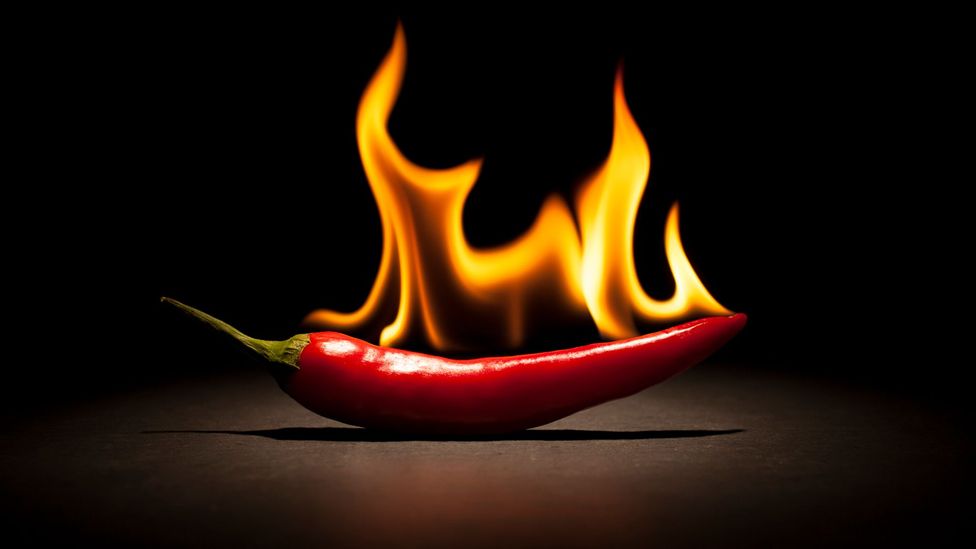
What Makes a Curry Burn your Mouth?
To understand how to reduce heat in a curry, we must first understand what makes a curry hot.
Whilst most of us understand that it is the chilli in a curry which makes it hot, I found it very interesting to learn that it is not the actual taste of a chilli which is hot.
What burns your mouth, is actually a chemical reaction to Capsaicin.
Capsaicin, which is the chemical in the chilli which makes the magic happen, activates a protein in your cells called TRPV1. As it is the job of this protein to sense heat, when it does, it alerts the brain that there is something burning in your mouth.
The brain then responds by sending a flaming lightning bolt of pain back down to you mouth to tell you to , “get that chilli out of your mouth”
It is the same physical response to putting your hand on the stove, feeling the pain and then quickly pulling it off to prevent further injury.
The more sensitive your body is to capsaicin, the more it burns.
HINT: Downing a glass of water will only spread the capsaicin around your mouth. As the capsaicin spreads around your mouth, it will come in contact with more pain (vanniloid) receptors and make your mouth burn in more places.
How to reduce heat in a curry
You taste your curry & it is too hot for your kids or guests, what now?
We show you how to reduce the heat in your curry and
(hopefully) save the day.
Ok smarty pants, but how do I actually reduce the burn?
Here’s the key: Capsaicin dissolves in fat, oil, and alcohol but not in water.
The first decision which you need to make, is if you are prepared to let your remedy alter the taste, texture or even the look of your dish.
If you are not prepared to alter the above, the simplest option would be to add more ingredients and thus lessen the amount of capsaicin by ratio. It may get complicated as you have to try and cook a ‘second dish’ and then add it to the pot of fire … but hey, it is a thugs life.
- Add Dairy: One of the best ways to counteract capsaicin is by adding a dairy product, such as whole fat milk, heavy cream or yogurt. Coconut milk, is a popular ingredient in many types of curries, and will also reduce the ‘heat.’
- Sugar & Acid: Try a teaspoon of an acid, such as vinegar, lemon juice, or even some chopped tomatoes. The acidity and will help to neutralise the alkalinity of capsaicin. Add a spoon of sugar to mask the vinegar. Do so with caution and add little by little until you are happy with the results.
I can not think of any other ways to ‘turn down the burn’. To avoid adding too much chilli in the first place, taste as you go, keep practicing and you will become a master curry chef in no time.
If the food is already on the table and you need to call the fire brigade, alcohol helps to dissolve capsaicin, anything over 13% will do. A shot of spirits works better than you would ever think, so try it and your night may just turn out to be one to remember. Else, serve extra starch and a glass of milk, if all else fails.
If you have any tips, tricks or family secrets in reducing the heat in a curry, it would be much appreciated if you would share them in the comments below.
HINT: If your fingers are burning after chopping chillies, mix up some baking soda & water and then submerge your hands in the mixture.
